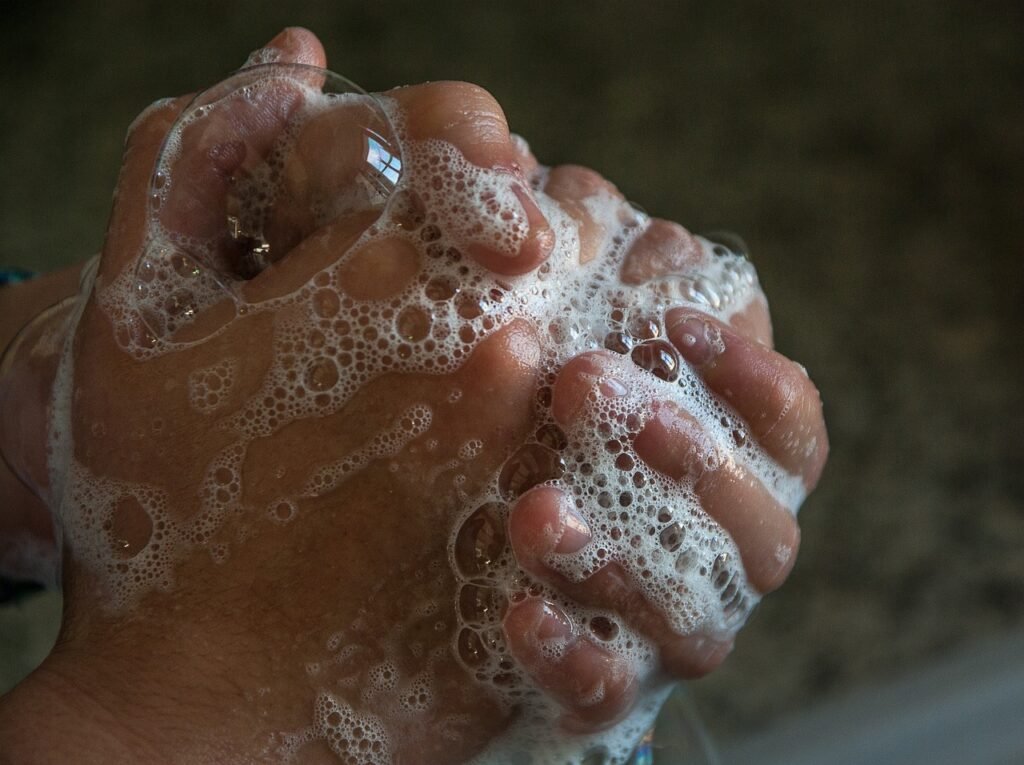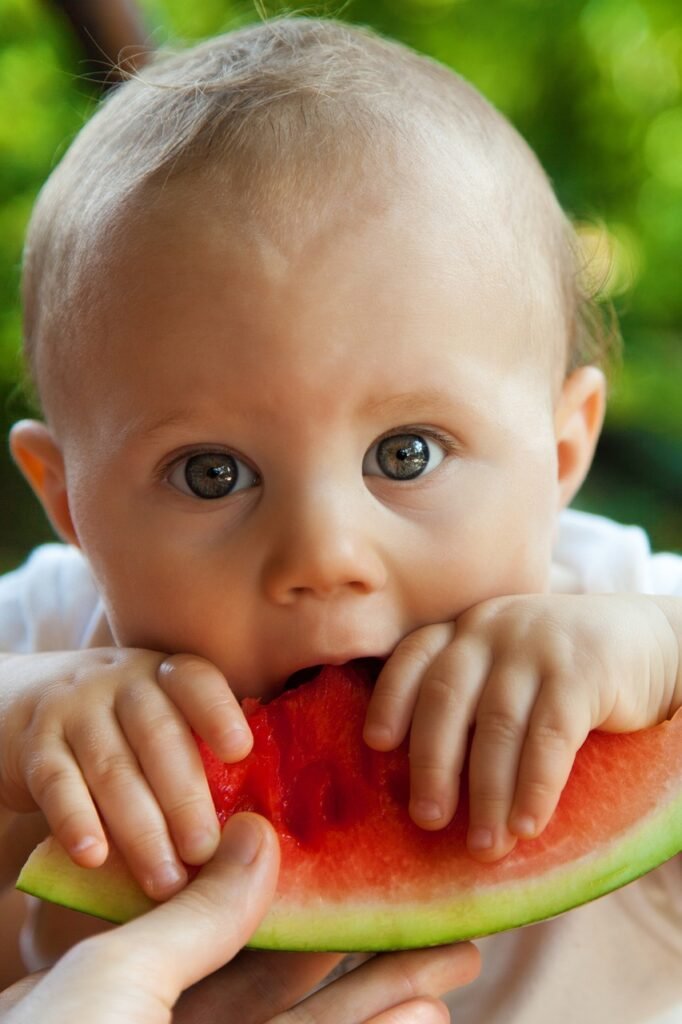This post may include affiliate links which means I may receive a commission from purchases made through links. I will only recommend products I have personally used. Learn more on my private policy page.

Eating fresh fruits is an essential part of a healthy diet. They are packed with vitamins, minerals, and fiber that are crucial for our overall health and well-being.
However, it is important to ensure that the fruits we consume are not only fresh but also clean. From harmful pesticides to bacteria and dirt, there are various contaminants that can be found on the surface of fruits.
That’s why it is crucial to know how to properly clean fruits before consuming them.
In this blog post, we will discuss some simple yet effective tips on how to clean fruit like a pro, ensuring that you and your family can enjoy safe and healthy produce.
The Importance of Properly Cleaning Fruit
Properly cleaning fruit may seem like a simple and mundane task, but it plays a vital role in ensuring that you and your loved ones stay healthy.
While fruits are undeniably packed with essential vitamins, minerals, and fiber, they can also harbor contaminants that pose potential health risks if not properly addressed. That’s why understanding the importance of cleaning fruit thoroughly is crucial for maintaining a healthy lifestyle.
Remove Pesticides

One of the primary reasons for cleaning fruit is to remove pesticides. Many fruits are treated with pesticides to protect them from pests and diseases during growth.
These pesticides, although beneficial for the fruit’s growth, can leave residues on the skin that can be harmful when ingested. Washing fruit under running water helps to reduce these residues, minimizing the risk of consuming potentially harmful chemicals.
Remove Dirt
Another important reason to clean fruit is to remove dirt, bacteria, and other pathogens that may be present on the surface. Fruits can come into contact with dirt during the harvesting process or can be exposed to bacteria and other contaminants during transportation and storage.
Cleaning the fruit effectively reduces the risk of ingesting harmful bacteria, which can cause foodborne illnesses and digestive problems.
Remove Debris
Additionally, proper cleaning can help remove any debris or foreign substances that may have come into contact with the fruit.
It is not uncommon for fruits to accumulate dust or even insects during the journey from farm to store. Washing them ensures that any unwanted materials are removed, making the fruit safe for consumption.
Extend Shelf Life
Cleaning fruit also helps to extend its shelf life. By removing dirt and bacteria, you reduce the risk of spoilage, allowing the fruit to stay fresher for longer.
This not only helps in reducing food waste but also ensures that you can enjoy the fruit at its best.
In summary, properly cleaning fruit is crucial for maintaining a healthy lifestyle. By removing pesticides, dirt, bacteria, and foreign substances, you minimize the risk of consuming potentially harmful contaminants.
Additionally, effective cleaning helps to extend the shelf life of fruit, ensuring that you can enjoy it at its best. So, the next time you bring home a basket of fresh fruit, take the time to clean it thoroughly.
Step-by-Step Guide on How to Clean Fruit – Different Types
Eating fresh fruits is a wonderful way to nourish your body with essential vitamins and minerals. But before you take that first bite, it’s crucial to make sure your fruits are properly cleaned.
Different types of fruits require different cleaning techniques to ensure they are safe to eat. Here’s a step-by-step guide on how to clean various types of fruits:
1. Berries:
Berries like strawberries, blueberries, and raspberries are delicate and can easily become waterlogged. To clean them, gently rinse them under cool, running water.
Avoid soaking them in water, as this can cause them to lose their flavor and texture. Dry them well.
2. Apples:

Apples are notorious for carrying wax on their skin. To remove this wax and any potential pesticide residues, wash the apple under running water and scrub them.
Once clean, pat the apple dry with a towel or let it air dry.
3. Citrus Fruits:
Citrus fruits like oranges, lemons, and limes have a protective skin that can harbor bacteria.
Rince them then, use a clean vegetable brush to scrub the skin gently. Rinse well and dry.
4. Grapes:

Grapes are often sold in clusters, making them difficult to clean properly. Start by removing the grapes from the stem.
Rinse them under running water, gently rubbing them to remove any dirt or debris.
To remove any pesticide residues, you can also soak them in a mixture of water and vinegar for 10-15 minutes. Rinse thoroughly and pat dry.
5. Melons:
Melons like watermelon, cantaloupe, and honeydew have a tough exterior that can harbor bacteria.
Begin by rinsing the melon under cool, running water. Use a vegetable brush to scrub the surface, especially in the crevices.
Once clean, dry the melon with a paper towel before cutting into it.
Remember, always wash your hands thoroughly before and after handling fruit, and use separate cutting boards for different things.
By following these simple steps, you can enjoy fresh, clean fruit that is safe for consumption.
Cleaning fruit properly is an important step in ensuring that you and your family can enjoy safe and healthy produce.
By taking the time to clean each type of fruit properly, you can reduce the risk of consuming harmful contaminants.
Expert Tips and Tricks for Keeping Your Fruit Fresh Longer
We all know the disappointment of reaching for a piece of fruit, only to find that it’s past its prime.
To make sure your fruits stay fresh and delicious for as long as possible, we’ve gathered some expert tips and tricks that will help you extend their shelf life.
So, grab a pen and paper, because you’ll want to jot these down!
1. Store fruits separately:
Different fruits release different levels of ethylene gas, a natural ripening agent. To prevent over-ripening and premature spoilage, store fruits separately.
Fruits like apples, bananas, and pears release high levels of ethylene, so it’s best to keep them away from more delicate fruits like berries, peaches, and citrus fruits.
2. Keep them cool:
Heat speeds up the ripening process, so it’s important to keep your fruits in a cool environment. Store them in the refrigerator, but be aware that some fruits, like bananas and tomatoes, may lose flavor and texture if stored at cold temperatures.
For these fruits, it’s best to keep them at room temperature and consume them within a few days.
3. Handle with care:

Rough handling can lead to bruising, which accelerates spoilage. Be gentle when handling fruits, especially delicate ones like berries and stone fruits.
Avoid stacking heavy objects on top of them or tossing them into bags or containers. Instead, place them in a single layer and handle them with care.
4. Use airtight containers:
Moisture can cause fruits to spoil quickly, so it’s important to store them in airtight containers or bags.
You can also add a paper towel to absorb any excess moisture and keep the fruit fresh for longer.
5. Freeze for later:

If you have an abundance of fruits that you can’t consume before they spoil, freezing is a great option. Most fruits can be frozen, either whole or sliced.
Just make sure to remove any seeds or pits before freezing. Frozen fruits can be used in smoothies, baked goods, or enjoyed as a refreshing snack.
Rotate your stock:
To ensure that your fruits are consumed at their peak freshness, it’s important to rotate your stock.
Use the “first in, first out” rule and make a conscious effort to consume older fruits before reaching for the new ones. This will help prevent any fruits from going bad unnoticed.
With these expert tips and tricks, you can now enjoy your fruits for longer without worrying about them going bad.
Common Mistakes to Avoid – How to Clean Fruit
While cleaning fruit may seem like a straightforward task, there are common mistakes that many people make unknowingly.
These mistakes can compromise the effectiveness of the cleaning process and leave you at risk of consuming harmful contaminants.
To ensure that you clean your fruit properly and avoid these pitfalls, here are some common mistakes to avoid:
1. Relying solely on water:
Many people believe that rinsing fruit under running water is enough to remove contaminants. However, this is not always the case.
Water alone may not be effective in removing pesticides and bacteria from the fruit’s surface. To enhance the cleaning process, it is recommended to use a fruit and vegetable wash or vinegar solution.
These solutions are designed to break down and remove stubborn residues, ensuring that your fruit is thoroughly clean.
2. Skipping the scrubbing step:
While rinsing fruit is essential, it is equally important to scrub the fruit’s surface gently. This helps to remove any dirt or bacteria that may be lodged in the fruit’s crevices or on its skin.
Using a clean vegetable brush or your fingers, gently scrub the fruit under running water. Pay extra attention to fruits with rough or bumpy skin, such as apples or melons.
3. Over-soaking or soaking for too long:
Over-soaking can cause fruits to lose their texture and flavor, making them less enjoyable to eat. It can also lead to waterlogging, especially for delicate fruits like berries.
To avoid this, limit the soaking time to a few minutes, ensuring that you remove the fruit promptly.
4. Using the same cutting board for fruits and vegetables:
Cross-contamination is a common mistake that can lead to foodborne illnesses. Using the same cutting board for fruits and vegetables can transfer bacteria and other pathogens from one type of produce to another.
To prevent this, always use separate cutting boards for fruits and vegetables. This simple step can go a long way in ensuring the safety of your produce.
5. Neglecting to wash your hands:
It may seem obvious, but washing your hands before and after handling fruit is crucial for maintaining cleanliness. Your hands can harbor bacteria and other contaminants that can transfer to the fruit during the cleaning process.
By washing your hands thoroughly with soap and water, you minimize the risk of cross-contamination and ensure that your fruit remains safe to consume.

By avoiding these common mistakes, you can clean your fruit effectively and reduce the risk of consuming harmful contaminants.
Wrap Up: Embracing a Healthy Habit Starts with Clean Fruit
Taking the time to properly clean your fruit is not just a mundane chore; it is an essential step in maintaining a healthy lifestyle. By removing pesticides, dirt, bacteria, and other contaminants, you are ensuring that you and your family can enjoy safe and nutritious produce.
Properly cleaning your fruit helps to eliminate any potential health risks associated with consuming harmful chemicals. Pesticides, although beneficial for fruit growth, can leave residues on the skin that may be harmful when ingested.
By washing your fruit under running water, you can significantly reduce these residues, minimizing the risk of exposure to potentially harmful substances.
In addition to pesticides, fruit can come into contact with dirt, bacteria, and other pathogens during the harvesting, transportation, and storage processes. By effectively cleaning your fruit, you are reducing the risk of ingesting harmful bacteria that can cause foodborne illnesses and digestive problems.
Cleaning fruit also helps to remove any debris or foreign substances that may have come into contact with the fruit during its journey from farm to store.
Washing them ensures that any unwanted materials are removed, making the fruit safe for consumption.

Not only does properly cleaning your fruit promote your health, but it also helps to extend the fruit’s shelf life. By removing dirt and bacteria, you are reducing the risk of spoilage, allowing the fruit to stay fresher for longer.
So, the next time you bring home a basket of fresh fruit, take the time to clean it thoroughly. By embracing the habit of cleaning your fruit like a pro, you are taking a crucial step towards a healthier lifestyle.
Remember to follow the step-by-step guide on how to clean different types of fruits and implement the expert tips and tricks for keeping your fruit fresh longer.
Avoid common mistakes like relying solely on water, skipping the scrubbing step, over-soaking, using the same cutting board for fruits and vegetables, and neglecting to wash your hands.
By adopting these practices, you can confidently enjoy clean, safe, and fresh fruit that is bursting with flavor and nutrients.
Embrace the healthy habit of cleaning your fruit, and let it become a regular part of your daily routine. Your body will thank you for it!
Related Articles:
Soft Shell Crab 101: Buy, Clean, Cook, and Eat Like a Pro
Keep it Cool: How to Store Onions for Maximum Freshness
As an Amazon Associate, I earn commission from qualifying purchases.





